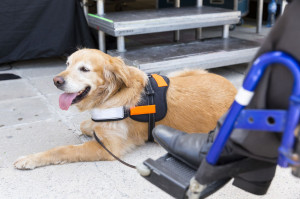

The best property managers are concerned with providing a stellar customer service experience to tenants of all abilities. The Americans with Disabilities Act (ADA) “prohibits discrimination against individuals with disabilities in all areas of public life, including jobs, schools, transportation, and all public and private places that are open to the general public.” Housing policies are covered under the ADA, so proactive landlords should lean in to their legal responsibilities towards tenants with disabilities.
Under the ADA, landlords are prohibited from asking questions about the nature of the impairment, even if the disability is highly visible (i.e. wheelchair). However the ADA clearly states what’s considered a disability. To be covered under the ADA, “a person must have a physical or mental disability that substantially limits one or more major life activities.” A partial list of protected disabilities include:
- Mobility impairments
- Hearing impairments
- Visual impairments
- Chronic alcoholism (if it is being addressed through a recovery program)
- Mental illness
- HIV, AIDS, and AIDS-Related Complex
- Mental retardation
Landlords may not ask for specifics or proof of disability during the rental application process. However, if the tenant makes a request for accommodation after the lease is signed, the landlord may ask for proof that the request will make the unit more functional for the tenant. This is known as a “reasonable accommodation.”
A reasonable accommodation is a change in rules, policies, or services that enable a person with a disability the equal opportunity to use and enjoy their home and common spaces. Think installing access ramps, providing a reserved parking spot at the front of a building, or allowing service animals in a unit where pets are usually not permitted.
A reasonable modification takes it a step further. It’s a structural modification to a unit or public spaces that is made to allow persons with disabilities to enjoy housing and related facilities to the fullest extent possible. Common modifications include widening doorways, installing a grab bar in a bathroom, or installing a ramp into a threshold.
As outlined under the law, landlords are responsible for paying for accommodations. Tenants are usually responsible for paying for structural modifications, unless the dwelling is listed as a federally assisted housing structure.
For more information about landlord responsibilities when renting to tenants with disabilities, refer to the U.S. Department of Housing and Urban Development website.

